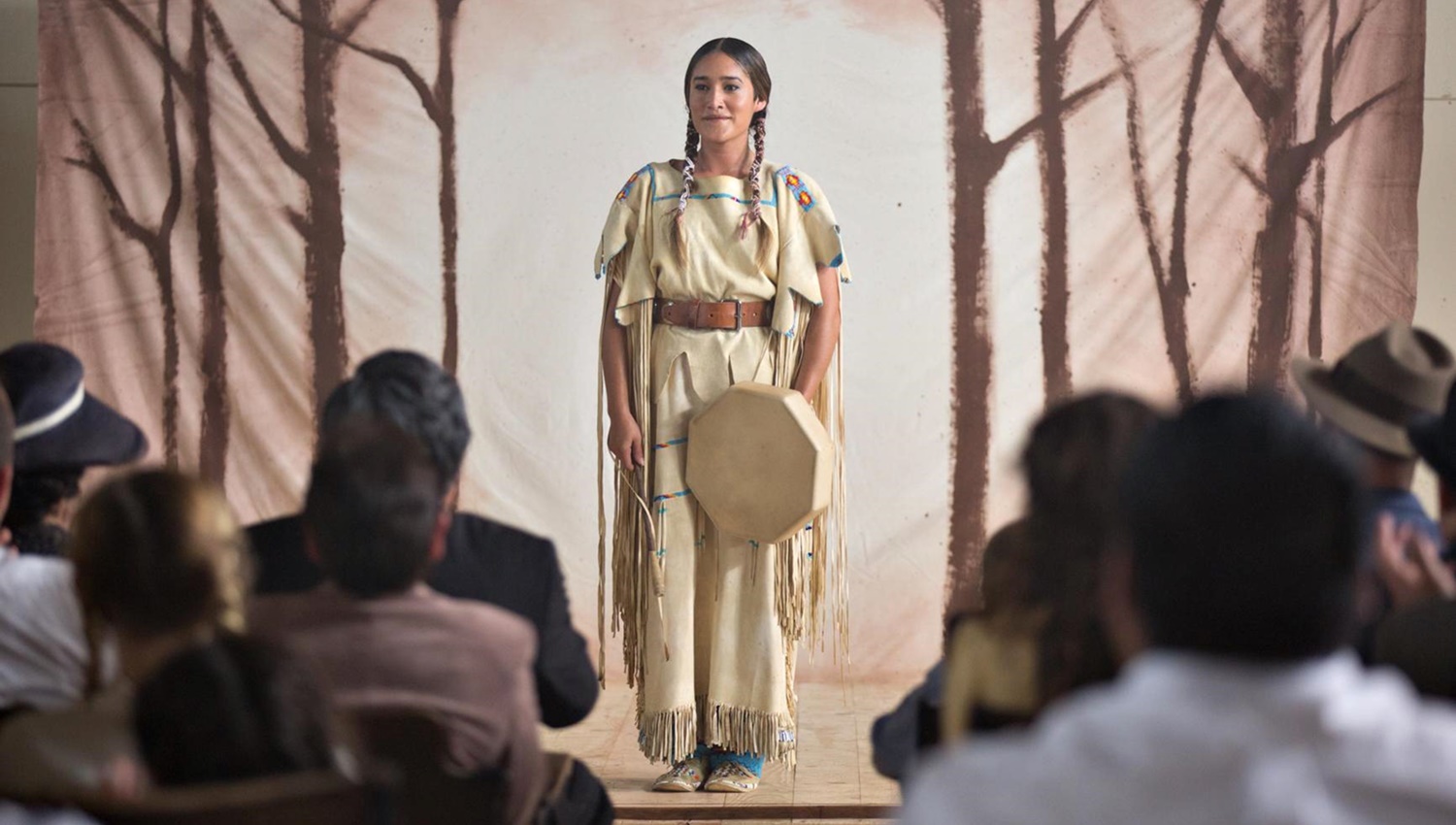
Ta Ata
Dustin Chase
I will be the first to admit the filmmaking on Te Ata (pronounced Tay Ott-Ha )is a bit elementary. It plays like a historical instructional video at times, funded by a church or educational group. The most jarring introduction is the title card of 1906, yet the characters speak modern English dialect. After a slow start, Te Ata reveals itself as a fascinating, untold part of history that manages to out-weight it’s lack in cinematic levity. What presence we do have is Kilcher (The New World), she has an enthralling screen presence that facilitates the audiences need for more information on Te Ata’s life. It doesn’t hurt that Birmingham (Hell or High Water) and Greene (Wind River) are also in there, elevating the acting quality far beyond the production value.
From childhood Mary Francis Thompson was always rebelling outside the parameters set by her white mother and Chickasaw father (Birmingham). The Thompson’s watched as their home in The Indian Territory transitioned to what’s now Oklahoma. During a time when traditional Native American dress and customs were outlawed as pagan rituals by the government, Mary Francis finds her calling through performance art. Renamed Te Ata (Kilcher) as a stage name, she attended an all girls college, excelling in drama. She instantly lands a job performing all over the nation, bringing her families customs and rituals to those interested in a deeper understanding. Te Ata’s dream was Broadway and through encouragement and talent, she makes her way to New York where her life will change forever.
Kilcher has an enthralling screen presence that facilitates the audiences need for more information on Te Ata’s life.
The filmstock is so polished, it’s hard to accept we are supposed to be in the early 1900’s. A lot of the films failure is the result of attempting to tell such a grandiose story that spans decades on such a small budget. Te Ata accomplished a lot in her lifetime, perhaps even changed the world a bit, even becoming a regular at The White House. Te Ata has little to no conflict as we wade through various chapters in her life. The screenplay follows the path of a stereotypical young woman who goes against the wishes of her traditional family, it’s just that the circumstances here are a bit more unique. In the early part of the film the narrative relies heavily on the original score to dictate how the viewer should feel emotionally. However, when the score and the imagery finally get on the same page, something beautiful begins to transpire.
There is a moment, where you really start to fall in love with Kilcher and her portrayal of this magnificent woman. It’s about the same time she meets her future husband (Astin). Their old fashioned romantic courtship is delightful. The story of Te Ata is interesting enough to get past the films slow narrative and lackluster delivery methods. Many of the shots are forcibly interior to keep costs down, but one of the most jolting moments in the film is when Ta Ata brings culture to a group of orphans in upstate New York. In full native costume, making a grand entrance via canoe, the overly dramatic score works in this moment, and at least for me, washed away some of the films earlier offenses.
Final Thought
The performance from Kilcher and the sheer fascination of the story rise above the lackluster filmmaking.
